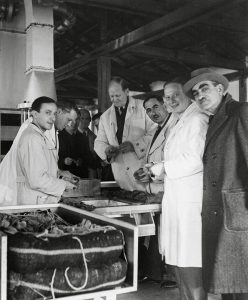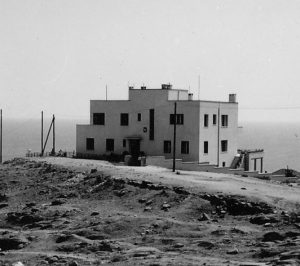A short historical overview




From top to bottom:
Photo 1 Automatized tobacco handling in Kavala in the 1930s, supervised by employees of the Swedish Tobacco Monopoly.
Photo 2 Viking Palace, ready to be inaugurated.
Photo 3 One of the guestrooms.
The Swedish House in Kavala was originally built as a staff residence for the employees of the Swedish Tobacco Monopoly in 1936. Kavala was at that time a hub for the handling of oriental tobacco, which was exported from Kavala’s harbour all over the world. The Swedish monopoly was then only one of many foreign companies keeping offices and residences there. However, after the Second World War the demand for oriental tobacco decreased and thus also the need for the Swedish company to keep and maintain a house in Kavala.
The building was eventually donated to the Swedish Institute at Athens in 1976, and has ever since functioned as a guesthouse for Swedish writers, artists and photographers,etc., as well as for scholars in need of a quiet, yet inspiring environment.
The Swedish House, together with its garden, is a protected building with the motivation that it is a typical example of the Bauhaus school and expresses the architectural trends of the interwar period. It was drawn by the Greek architect Panagiotis Manouilidis who was inspired by contemporaneous architecture styles in Western Europe. The handmade designer furniture, much of it still in place, was imported from Sweden. The house therefore, although located in northern Greece, constitutes a rare example of intact Swedish interior design from the 1930s.
Kavala House Curators
Thomas Thomell, 1980-2006
Hjalmar Dahm, 2006-2006
Carita Schmidt, 2007-2011
Thomas Thomell (vikarie), 2011-2012
Eleni Androvic, 2012-2014
Elisabeth Gullberg, 2014-
